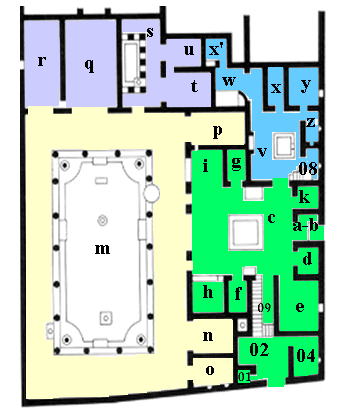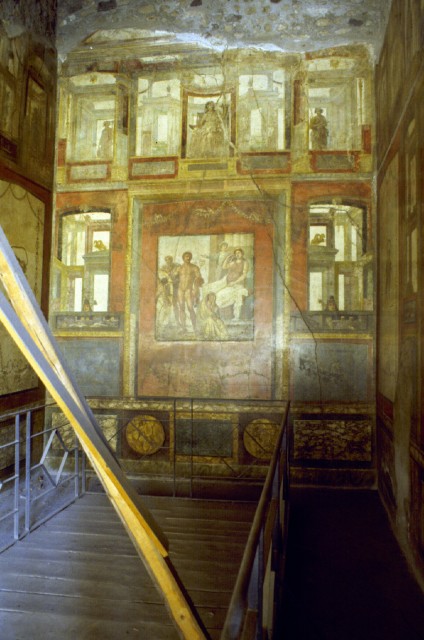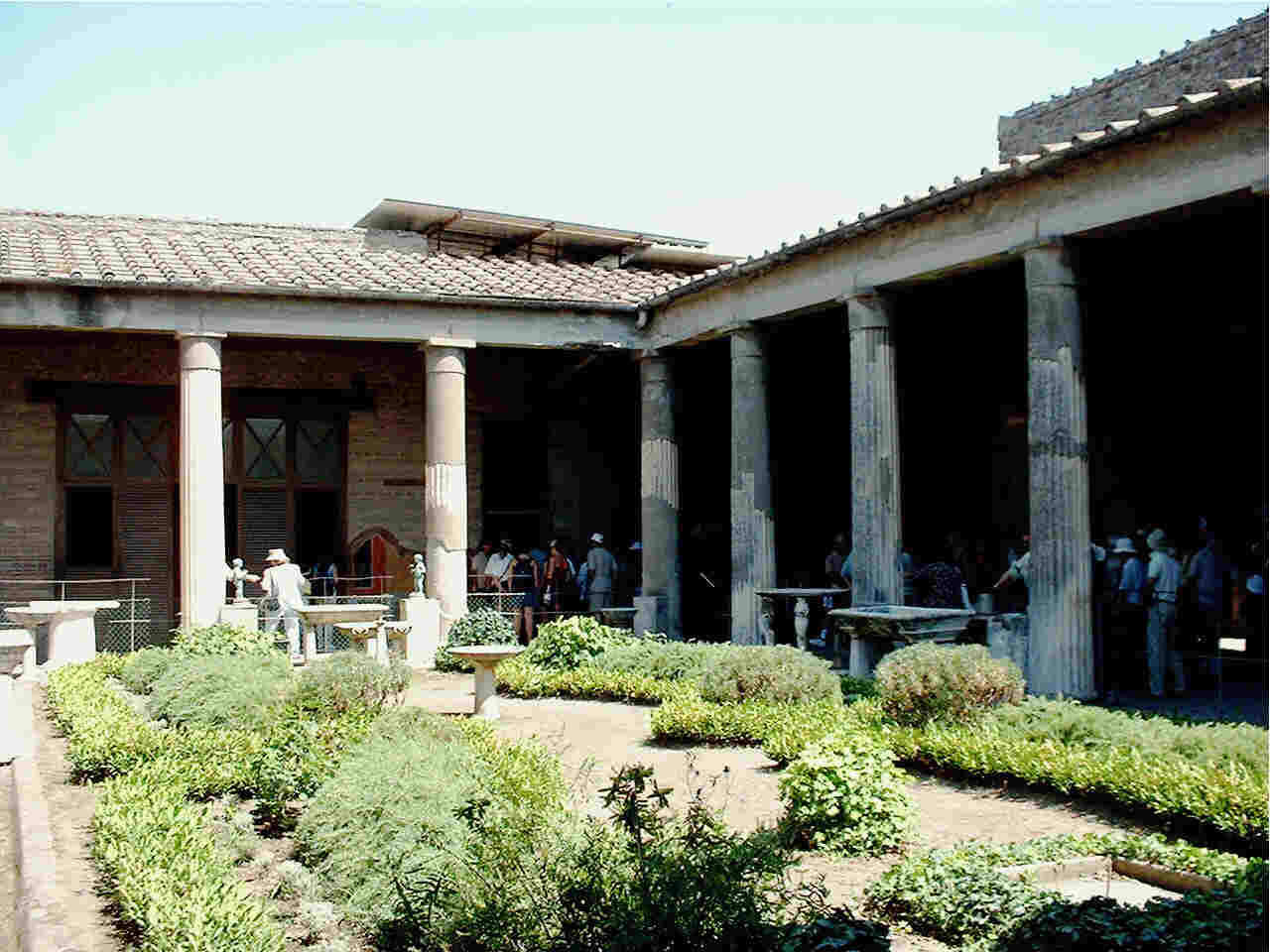|
The House
Rooms p, n, and m

Room p

Room p is in the northeaster corner of the garden, and is decorated in Fourth style. Some of the paintings include
depictions of Daedalus and Pasiphae, and the frequently cited punishment of Ixion. Its general function is thought to have
been a triclinium.
Room p
Room n
Room n also has paintings in the Fourth style, including Heracles as an infant. The wall paintings
represent a variety of ornamentation. The room itself can be found along the eastern side of the garden. Possible functions of the
room include oecus as well as a triclinium.

Room n
Room m
 The courtyard could be found in the western side of the house, and accounted for a large proportion of the house's overall space. Fourth Style was used for the wall paintings, which were black areas decorated with plants. A variety of remains were discovered
in the area. In the center garden area were fountains and statues. In each corner was a statue which likely acted as a fountain as the statues were interconnected by lead piping. Two bronze statues of cupids (holding a goose and grapes) were also found. Other statues included figures such as Paris, Bacchus, and some satyr.
In the garden's center was a marble basin and in the southern portions of the garden was a marble base which has been assumed to have been a pool. The courtyard could be found in the western side of the house, and accounted for a large proportion of the house's overall space. Fourth Style was used for the wall paintings, which were black areas decorated with plants. A variety of remains were discovered
in the area. In the center garden area were fountains and statues. In each corner was a statue which likely acted as a fountain as the statues were interconnected by lead piping. Two bronze statues of cupids (holding a goose and grapes) were also found. Other statues included figures such as Paris, Bacchus, and some satyr.
In the garden's center was a marble basin and in the southern portions of the garden was a marble base which has been assumed to have been a pool.
Contextualizing the garden provides an interesting insight on the Vettii and their social values. The features of the garden have been observed as quite systematically laid out. Almost all of the statues were in marble with the only exception being the two bronze statues previously mentioned. In Pompeii society, appearance was
very important, and the garden was one part of a house that would be shown off to visitors. Marble was also a valuable material so the frequent use of it as the main material for the structures would be a way the residents could show off their status.
A current visit to the site would expose visitors to the same assortment of flowers believed to have been used by the Vettii, including roses, violets, and hyacinths.[23]
|

